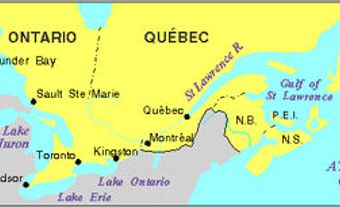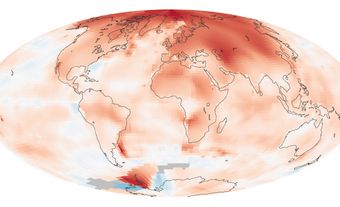
Grass carp is one of four species of carp known collectively as Asian carp.
Overview
Invasive species have the potential to affect every region in Canada. That said, the Great Lakes basin is one of the country’s most heavily affected ecosystems, with more than 180 known invasive species having arrived in the basin since the 19th century. Between 1970 and 2000 alone, a new invasive species was detected in the Great Lakes every eight months on average, leading some researchers to suggest that unless new regulations were put in place, countless new invasive species could become established in the Great Lakes by 2063.
Not all invasive species cause severe and noticeable effects on their new ecosystems. In addition, likely not all invasive species in Canada have even been identified yet, and others may simply be dormant. For example, there are dozens of invasive snail and mollusc species in the Great Lakes watershed. But few beyond zebra and quagga mussels have been shown to have negative impacts on the ecosystem by filter-feeding huge quantities of phytoplankton, food that’s no longer available to numerous other species that depend on it to survive. Yet these dozens of snail and mollusc species may be causing problems that aren’t fully understood — researchers simply don’t know.
Scientists do know, however, that as greater numbers of invasive species arrive in a location, they can occasionally help each other prosper. In a process called invasion meltdown, some invasive species help other invasive species thrive by providing habitat or access to food that native species cannot equally share (see Case Study: Zebra and Quagga Mussels below).
How Do Invasive Species Spread?
Invasive species are often introduced to new habitats accidentally, though humans are almost always involved in some way. When ocean-going ships empty their ballast (a compartment at the base of the vessel, used to help it balance) in the Great Lakes, for example, that water, often taken on in distant parts of the world, can carry numerous species not native to the basin. Zebra mussels are just one of many species that have spread throughout North America after being introduced to the Great Lakes via ballast water from ocean-bound ships — others include round gobies, quagga mussels and faucet snails, in addition to numerous invasive plants.
Climate change is another key way invasive species spread throughout Canada. Deer ticks, known in the eastern United States for carrying Lyme disease, were once controlled by cold winters. Since the beginning of the 21st century, Lyme disease–carrying ticks have been slowly advancing north into numerous parts of Canada, including Ontario, Quebec, Nova Scotia, southern Manitoba, Saskatchewan and Alberta. In early 2016, the Canadian government was so worried about the ticks’ introduction to Canada and their ability to spread disease that Ottawa’s Public Health Agency investigated the issue.
Humans have introduced some species to new regions in Canada to serve an ecological function, or for recreational purposes. Chinook and coho salmon, for example, were intentionally stocked in the Great Lakes as far back as the mid-19th Century, but were increased in the 1960s both to control alewives (another invasive fish) and to create a sport fishery for salmon. Largemouth bass are another example of this. While largemouth bass are native to eastern North America, the fish is invasive in British Columbia’s Lower Mainland and Columbia River system, where they were introduced by anglers for sport fishing reasons. Once loose, largemouth bass have killed off many prey fish populations and spread disease to native species.
Why Are Invasive Species a Concern?
Invasive species are concerning for the following reasons:
- compete directly with native species for food and habitat;
- reduce local biodiversity, and put added pressures on endangered or at-risk species;
- spread diseases like Lyme disease to humans or botulism to fish and shorebirds through aquatic and land-based food webs;
- kill agricultural crops and native trees; and
- cost billions in management fees and lost economic value of crops, forests and fisheries.
While the costs of living with invasive species are difficult to pin down, researchers studying the issue in 2004 found the economic impact of just 16 non-native species (including the Asian longhorn beetle, gypsy moth, ruff and the horn fly) — on everything from crop yield to fisheries to tree death — was between $13.3 billion and $34.5 billion every year. These 16 species represent just 1.1 per cent of the estimated 1,442 invasive species currently in Canada.
This massive cost has led some researchers to call invasive species an “invisible tax” that all Canadians pay for the reduced ecosystem services we receive from nature. Beyond crops or trees eaten by invasive pests, the economic and social price Canadians pay can include the loss of revenue for sport and commercial fisheries; the disruption of water supplies for municipal drinking water, power plants and industrial facilities; and lost recreation and tourism opportunities.
Case Study: Sea Lamprey

The sea lamprey is an invasive species found in the Great Lakes. Using it’s suction cup mouth and teeth, it attaches itself to native fish and feeds off them.
Native to the North Atlantic Ocean, the Baltic and Adriatic seas, the eel-like sea lamprey arrived in Lake Ontario as early as 1835. While Niagara Falls was long a natural barrier to their upstream movement, the lamprey bypassed the falls through the Welland Canal in the early 20th century and was established in all Great Lakes by 1938.
Yet even by the 1920s, lamprey had begun using their suction cup mouths and razor-sharp teeth to feed on local fish populations that had no means of fighting them off. In just 12 to 18 months, a single lamprey is able to kill more than 20 kg of fish.
In the Great Lakes, a lack of predators, coupled with abundant food and spawning rivers, allowed lamprey populations to soar. By the 1950s, lamprey had nearly decimated sturgeon and lake trout populations. Lake trout yields dropped from 15 million pounds in the early 1940s to just 300,000 pounds by the late 1960s.
It wasn’t until 1958 that a series of toxins were identified to control lamprey populations. Use of these lampricides and other control methods have successfully reduced lamprey populations by 90 per cent from their historic peak.
Case Study: Zebra and Quagga Mussels

Though no bigger than a fingernail, zebra mussels can clog pipes and consume massive amounts of algae.
No bigger than an adult’s fingernail, zebra mussels arrived in the Great Lakes in the 1980s in the ballast water of container ships arriving from the Ponto-Caspian region of the Black Sea. Though small in size, zebra mussels, and the closely related quagga mussels that arrived shortly after, are trouble for people and freshwater ecosystems across Canada and the United States. Their rapid growth clogs water intake pipes for factories, power plants and municipal drinking water supplies. They also consume massive quantities of algae from waterways, food that’s needed by other aquatic species to survive.
From their introduction in Lake Ontario, both mussel species have spread widely throughout North America — north towards Quebec City via the St. Lawrence River, and south throughout the Mississippi River watershed to the Gulf of Mexico. Beyond the Great Lakes and Mississippi River, zebra and quagga mussels have also been found across the southwestern United States.
Zebra and quagga mussels have also helped other invasive species thrive, an occurrence that researchers have called invasion meltdown. By growing in thick beds on top of one another, zebra and quagga mussels have provided unexpected food and habitat for invasive amphipods. They have also allowed an invasive shrimp to colonize new territory in Lake Erie where they have become food for the round goby, another invasive species.
Case Study: Mountain Pine Beetle

The mountain pine beetle, a native of Western Canada, has expanded its traditional range in central British Columbia into northern BC and Alberta. The small beetles are known for boring into the bark of trees and slowly killing them by releasing a fungus that stops the transportation of water through a tree.
Cold winters, with temperatures consistently reaching -40°C, keep mountain pine beetle populations in check. As winters warmed due to climate change, and as extreme weather events like drought put added stress on forests, the beetle was able to thrive and spread widely over entire mountain ranges, despite having an abundance of natural predators, including woodpeckers, parasites and other insects.
By 2017, it’s estimated that mountain pine beetles had destroyed 58 per cent of all merchantable lodgepole pine in British Columbia across 18 million hectares — roughly two and a half times the size of New Brunswick.
Case Study: Asian Carp
Grass, silver, bighead and black carp (known collectively as “Asian carp”) are not yet established in Canada, though biologists and fishers have found small pockets of grass carp in tributaries of Lake Erie, Lake Huron and along the Toronto waterfront. Breeding populations of grass, bighead and silver carp currently swim in the Illinois River, with commercial fishers and electric barriers near Chicago the only things stopping them from reaching Lake Michigan.
These four related species were brought to the United States between the 1960s and 1980s to assist fish farmers and city governments in cleaning aquaculture and sewage ponds in the southern United States. After being released into open waterways, grass, silver and bighead carp have bred in the wild and followed rivers throughout America, north towards the Great Lakes and south to the Gulf of Mexico.
As of 2019, these fish threaten to enter Canadian ecosystems, where breeding populations could mean trouble for coastal wetlands, native mollusc and fish who rely on the same food sources to survive that silver and bighead carp eat. Asian carp can eat 40 per cent of their body weight each day, reaching 40 kg or more in weight and 1 m in length. Given there is ample food for Asian carp to thrive in the Great Lakes and the necessary spawning rivers to help them reproduce, researchers suspect that if they become established in the Great Lakes, within 5 to 20 years of their arrival, Asian carp could become the most dominant fish species in Lakes Michigan, Erie and Huron.

 Share on Facebook
Share on Facebook Share on X
Share on X Share by Email
Share by Email Share on Google Classroom
Share on Google Classroom


